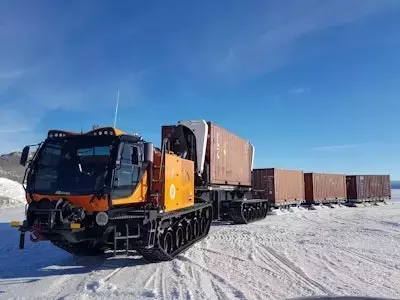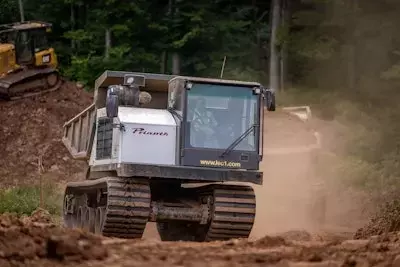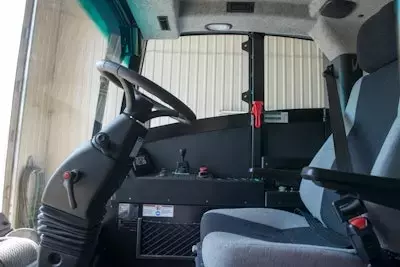Crawler carriers have emerged as a vital component in the ever-changing landscape of off-highway equipment. Spanning from construction to oil and gas, and beyond, these machines are at the forefront of meeting the growing demands of various industries. This article delves deep into the current state of crawler carrier technology and explores the areas where the industry can focus to thrive in the face of increasing market pressures.
Unleashing the Potential of Crawler Carriers in Off-Highway Operations
How Climate Control Transcends Basic Comfort
Climate control in crawler carriers has undergone a significant transformation. Once considered a luxury, it is now an essential aspect for operator comfort and machine performance. Advanced HVAC systems are becoming standard features, replacing the days when air conditioning was an optional extra. These systems not only keep operators comfortable in extreme temperatures but also boost productivity and extend work hours. For example, in the southern regions of the United States where temperatures soar, a well-designed climate control system allows for continuous work without frequent breaks due to heat exhaustion.Moreover, some manufacturers are leveraging unique cold climate technologies to enhance their crawler carriers' climate control capabilities. Features like windscreen de-icing systems, which combine forced air circulation and heated glass filaments, ensure clear visibility in cold and humid conditions. This technology, originally developed for winter vehicles, is now integrated into crawler carriers, expanding their operational range and reliability in diverse climates.Comfort and Ergonomics: The Key to Operator Retention
In the face of the skilled labor shortage, operator comfort and ergonomics have become crucial in equipment design. The most advanced crawler carriers now feature cab designs similar to high-end automobiles, with spacious interiors, ergonomic controls, and superior visibility.The adoption of automotive-style controls, such as steering wheels and foot pedals, is a significant trend. This reduces operator fatigue during long shifts and shortens the learning curve for new operators, addressing the industry's need for quicker training. Adjustable, air-suspended seats with lumbar support and ergonomically-designed armrests are becoming the norm. Some manufacturers even offer electric seats, allowing operators to find the optimal position for different tasks and improving visibility in all directions.Modern crawler carriers also meet strict roll-over protective structure (ROPS) and falling object protective structure (FOPS) standards, providing crucial protection for operators. These certifications demonstrate the industry's commitment to operator safety, ensuring the cab can withstand significant impacts in hazardous situations.The emphasis on operator comfort extends beyond the cab. Noise reduction technologies, including improved insulation and engine placement, create quieter work environments, reducing operator stress and fatigue over long hours.Simplifying Complex Tasks
Operating heavy equipment has long been a barrier for new operators. However, the latest crawler carriers are incorporating technologies that simplify operations without sacrificing capability.One innovation is the introduction of automated systems for tasks that previously required significant operator skill. Automatic track tensioning systems reduce maintenance requirements and ensure optimal performance without constant operator attention. Inclinometers with visual and audible alarms provide real-time feedback on machine stability, helping operators navigate challenging terrain safely. Some advanced models even incorporate adaptive control systems that learn the characteristics of different attachments and optimize performance, reducing the need for manual adjustments.The interface between operator and machine is also evolving. Touch-screen displays with intuitive, customizable interfaces replace traditional gauge clusters, providing operators with clear, relevant information. These systems often include on-board diagnostics, simplifying troubleshooting and reducing downtime.Enhancing Safety and Productivity
Visibility is a critical safety feature in crawler carriers that also impacts productivity. Leading manufacturers are redesigning cab structures to maximize visibility, with some models offering nearly 360-degree views of the surrounding area.Large, panoramic windshields and floor-to-ceiling side windows are becoming more common, as are sloped hood designs that improve forward visibility. These design changes not only enhance safety by reducing blind spots but also increase efficiency in tasks that require precise positioning.In addition to direct visibility, camera systems are now standard on many models. Rear-view cameras are common, and some manufacturers offer multi-camera systems that provide a bird's-eye view of the entire machine and its surroundings. These systems are invaluable in congested worksites or when maneuvering in confined spaces.Fleet Management's Future in Connectivity and Telematics
The integration of advanced connectivity and telematics systems is transforming the crawler carrier market. Telematics dashboards enable fleet managers to monitor all vehicle operational data remotely, including fluid levels, engine temperature, and operating hours.These systems also allow fleet managers to view the driver's instrumentation in the cab, providing insights into machine operation and performance. Remote monitoring enhances operational efficiency and aids in predictive maintenance, reducing downtime and extending equipment life.Modern telematics systems provide real-time data on machine location, operating hours, fuel consumption, and performance metrics. This information allows fleet managers to optimize equipment utilization, schedule preventive maintenance more effectively, and identify opportunities for operator training.Some manufacturers offer remote diagnostics capabilities, alerting maintenance teams to potential issues before they lead to breakdowns. They can even deliver wireless software updates remotely, ensuring equipment always operates with the latest improvements.The integration of telematics data with fleet management software creates new opportunities for efficiency. Automated maintenance scheduling based on actual usage ensures equipment receives service without unnecessary downtime.Meeting Stricter Emissions Standards
As environmental regulations tighten worldwide, crawler carrier manufacturers are focusing on cleaner, more efficient power systems. The latest models meet or exceed stringent emissions standards, such as Tier 4 Final in the United States and Stage V in Europe.Some manufacturers are exploring alternative fuel options, including biodiesel compatibility and hybrid or fully electric power systems for certain applications. While these technologies are still in their early stages, they represent a significant area of future development as the industry aims to reduce its environmental impact.A Holistic Approach to Crawler Carrier Advancement
The crawler carrier market is at a critical juncture in its evolution. The convergence of advanced technologies, changing workforce dynamics, and environmental concerns is driving rapid innovation in machine design and operation.Successful crawler carrier companies will take a holistic approach to advancement, incorporating the latest technologies and ensuring they work together to enhance overall performance, efficiency, and operator experience. For manufacturers with broad market experience, cross-pollinating technologies will continue to enhance vehicle design.For fleet managers and equipment purchasers, this evolution presents both opportunities and challenges. While the latest crawler carriers offer high levels of productivity and efficiency, they require a more sophisticated approach to operation and maintenance. Investing in operator training and embracing new fleet management technologies is crucial to realizing the full potential of these advanced machines.As the industry continues to evolve, close collaboration between manufacturers, operators, and end-users will be essential. By focusing on real-world needs and applications, the crawler carrier market can ensure technological advancements translate into tangible benefits on the job site, driving progress across the off-highway construction, oil, gas, and utility sectors.




